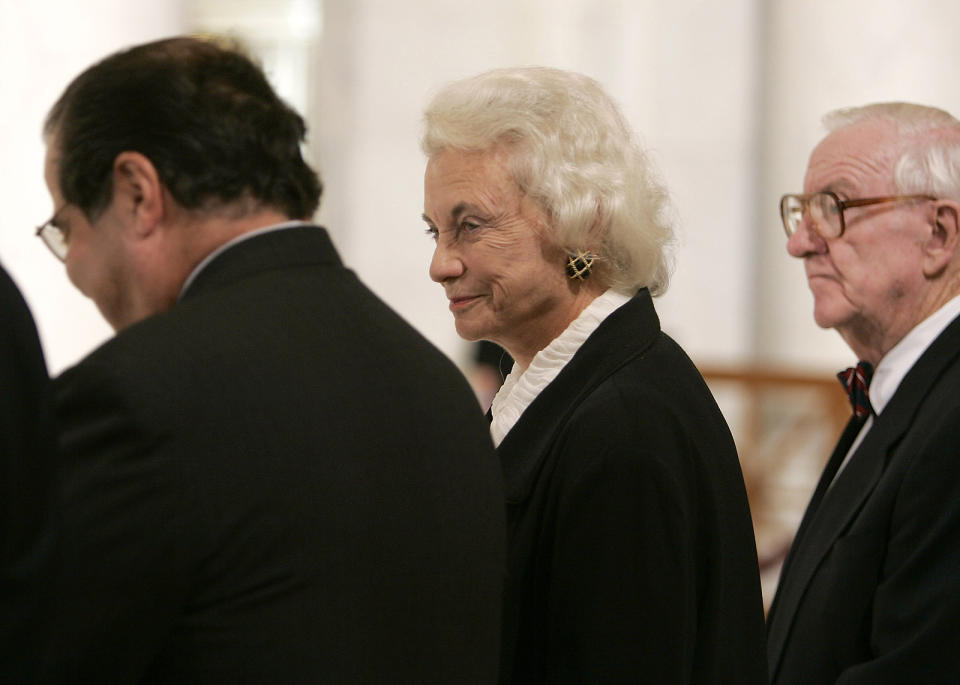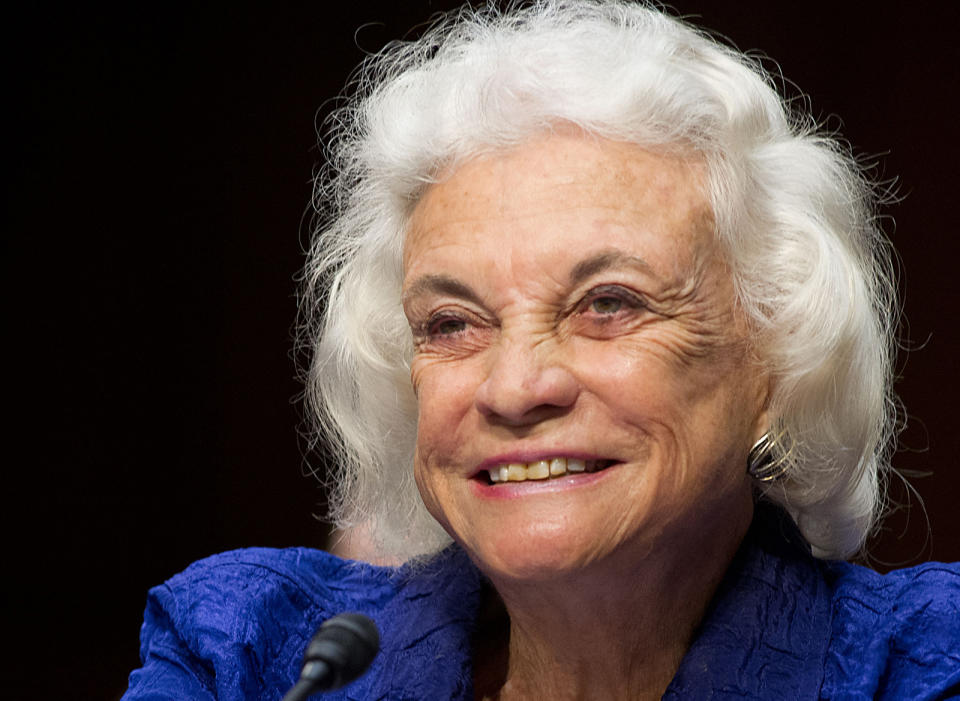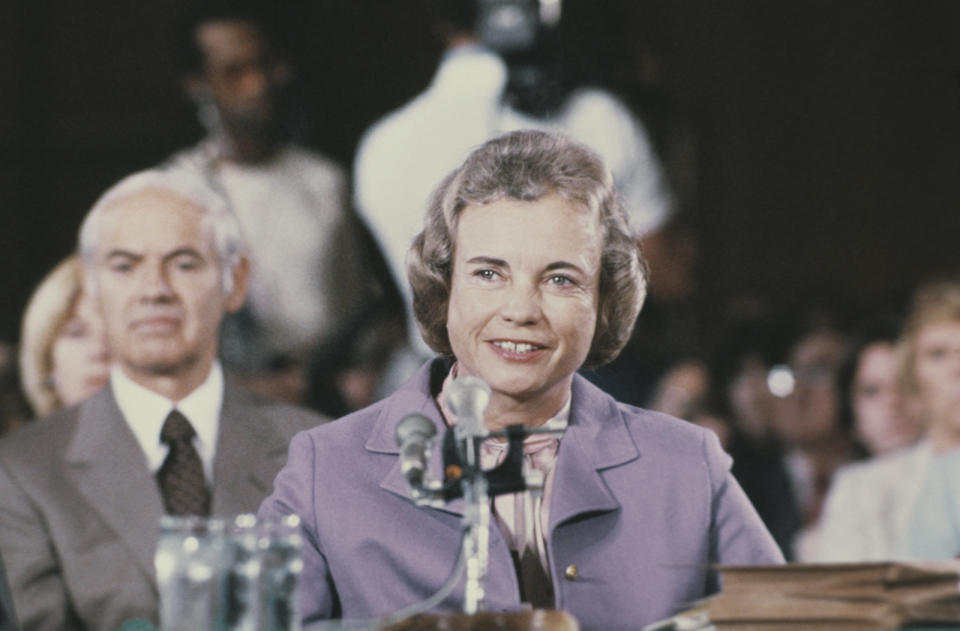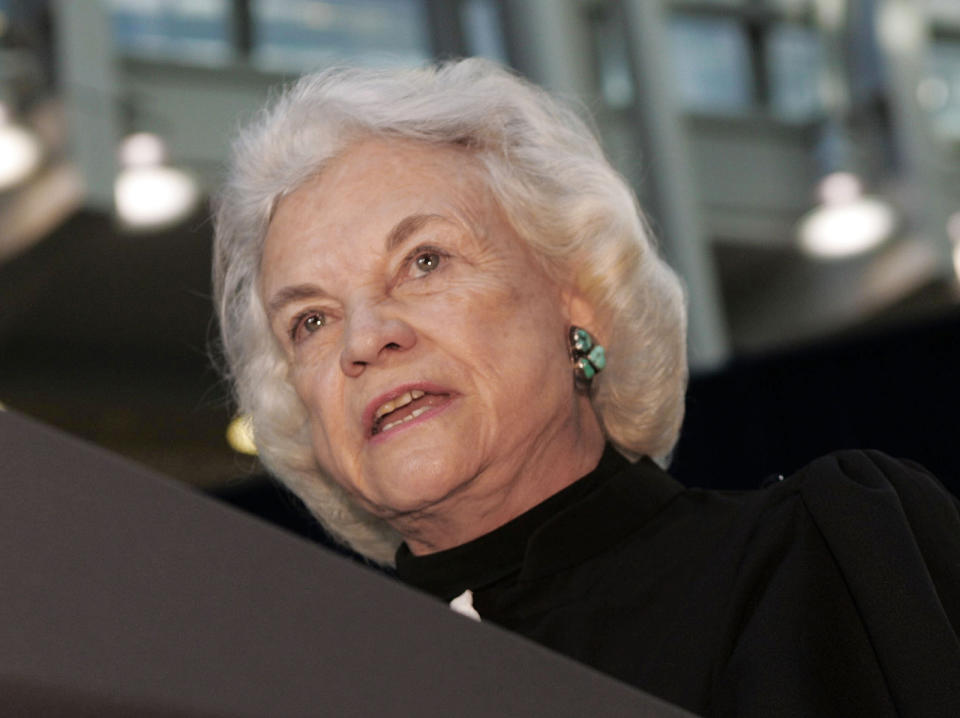Former Supreme Court Justice Sandra Day O’Connor dies at 93
- Oops!Something went wrong.Please try again later.
History-making Supreme Court Justice Sandra Day O’Connor, who became the first woman on the nation’s highest court in 1981 and spent the next quarter-century as a pivotal figure in an oft-divided panel, has died. She was 93.
The jurist’s cause of death was listed as “complications related to advanced dementia, probably Alzheimer’s, and a respiratory illness,” according to a news release from the Supreme Court.
O’Connor retired from the Supreme Court in 2006, in part to assist her husband John Jay O’Connor III as he struggled with Alzheimer’s disease before his death three years later. In October 2018, she publicly released a letter revealing that she too was diagnosed with the “beginning stages of dementia, probably Alzheimer’s disease.”
In the court’s statement, Chief Justice John G. Roberts, Jr., said Justice O’Connor “blazed an historic trail as our Nation’s first female Justice. She met that challenge with undaunted determination, indisputable ability, and engaging candor. We at the Supreme Court mourn the loss of a beloved colleague, a fiercely independent defender of the rule of law, and an eloquent advocate for civics education. And we celebrate her enduring legacy as a true public servant and patriot.”
The Texas-born O’Connor broke the glass ceiling after 192 years of male Supreme Court justices, and was later followed by fellow female jurists Ruth Bader Ginsburg, Sonia Sotomayor, Elena Kagan, Amy Coney Barrett and Ketanji Brown Jackson. She became a key swing vote in scores of cases, including the decision upholding a woman’s right to abortion in Roe v. Wade.
The jurist, appointed by President Ronald Reagan, was also the deciding vote in Bush v. Gore, the bitter legal battle following the 2000 presidential election, a ruling that effectively stopped the Florida recount and installed George W. Bush in the White House while making Al Gore an also-ran.
Though nominally conservative, O’Connor consistently voted to protect abortion rights, support affirmative action and express concerns over the death penalty. Yet she was also an ardent defender of states’ rights and checks on presidential power.
And she was often on the winning side of the court’s most contentious debates: O’Connor voted with the majority in 148 of the 193 cases decided by a 5-4 vote between 1995 and her retirement.
Sandra Day was a daughter of the southwest, born in El Paso, Texas, and raised on her family’s Arizona cattle ranch dubbed the “Lazy B” — where the self-described “cowgirl” became adept at horseback riding and helping with various farm duties. She proved an exceptionally bright girl, reading by the age of 4 while excelling in her schoolwork.
O’Connor’s parents opted to send her to school in El Paso, where she lived with her grandmother while classes were in session and returned home for summers on the ranch.
She applied to Stanford University, overcoming the school’s gender bias to win acceptance and graduating in 1950 with a degree in economics. She earned her degree at the college’s law school just two years later, ranking third in a class of 102 students that included her future Supreme Court colleague William Rehnquist.
But the new graduate discovered no law firm in Los Angeles or San Francisco wanted to hire a female attorney. Her lone job offer was for a secretarial position.
She finally landed a nonpaying job for a county attorney in San Mateo, California, just to establish herself, and worked her way up to deputy county attorney. She also married fellow Stanford Law grad John O’Connor, and the couple moved in 1954 to Germany. John worked as an Army attorney while his wife worked as a civilian lawyer focused on contracts.
The couple resettled in Arizona in 1958, with a stint in private practice leading to a 1965 position as the state’s assistant attorney general. That four-year stint ended with her appointment to fill a vacant seat in the Arizona state senate, where she became the first female majority leader. In 1973, O’Connor — the mother of sons Scott, Brian and Jay — changed jobs by winning election to a seat on the Maricopa County Superior Court.
She was appointed to the Arizona Court of Appeals in 1979, and formally nominated to the Supreme Court by Reagan on Aug. 19, 1981, as the new president made good on a campaign promise to put a woman on the bench. A month later, she was confirmed by the U.S. Senate and was sworn in the court’s first female justice on Sept. 25, 1981.
“It did not seem possible that a ranch girl would grow up to serve on our nation’s highest court,” she wrote in her autobiography, “Lazy B: Growing Up on a Cattle Ranch in the American Southwest.”
During her time on the Supreme Court bench, O’Connor was diagnosed with breast cancer in 1988 and underwent a mastectomy. She went public with her ailment and treatment in a 1994 speech before the National Coalition for Cancer Survivorship.
She finally left the Supreme Court on Jan. 31, 2006, replaced by incoming Justice Samuel Alito.
Following her retirement, President Barack Obama presented O’Connor with the the nation’s highest civilian honor, the Presidential Medal of Freedom, in 2009. Arizona State University also named its law school in her honor.
Nine years after Alzheimer’s claimed her husband, O’Connor — by then age 88 — went public with word of her struggle with the same debilitating ailment. By then, a hip injury had left her reliant on a wheelchair to get around.
“As this condition has progressed, I am no longer able to participate in private life,” she wrote in October 2018. “Since many people have asked about my current status and activities, I want to be open about these changes, and while I am still able, share some personal thoughts.
“While the final chapter of my life with dementia may be trying, nothing has diminished my gratitude and deep appreciation for the countless blessings in my life.”
_____




